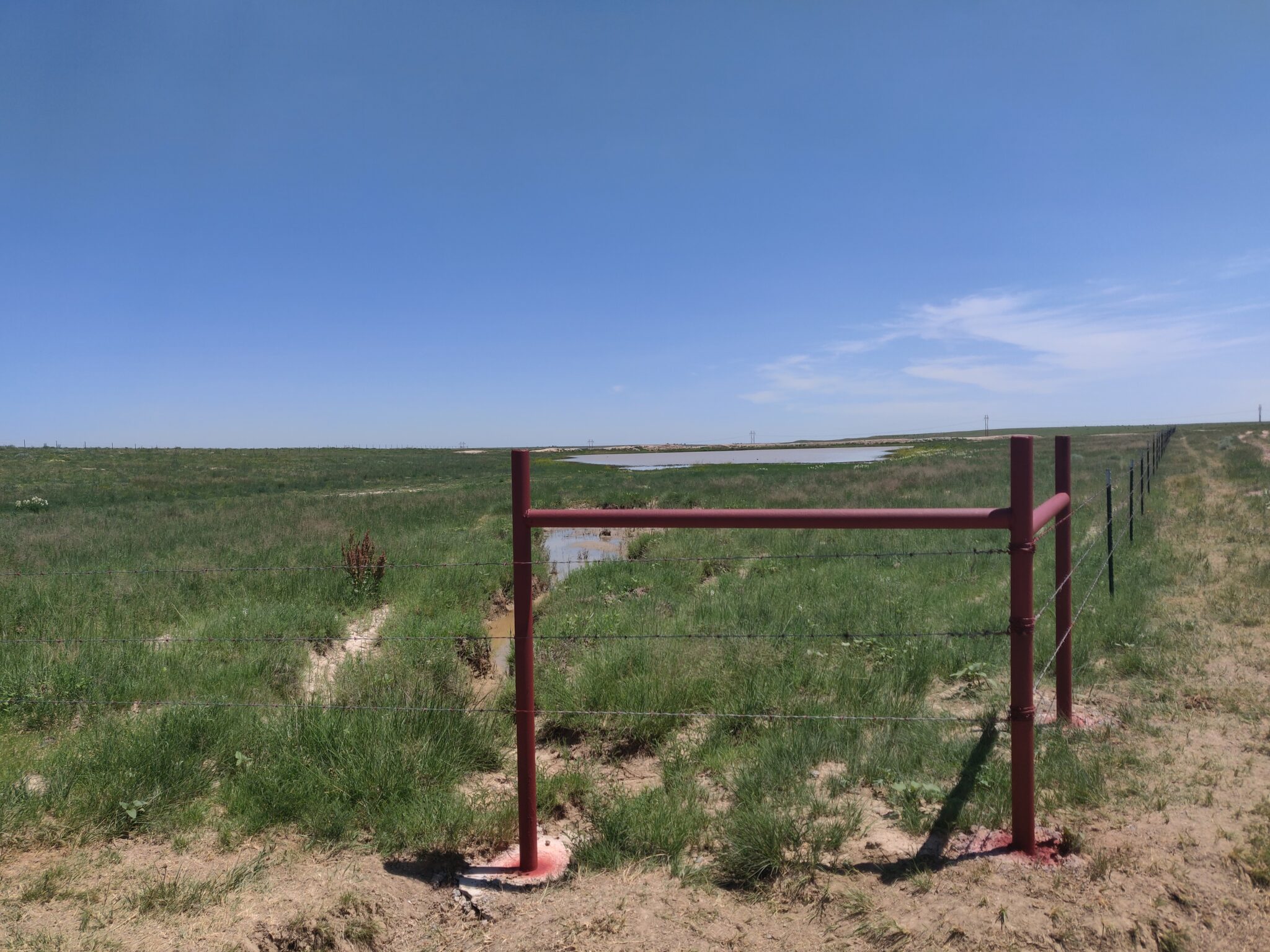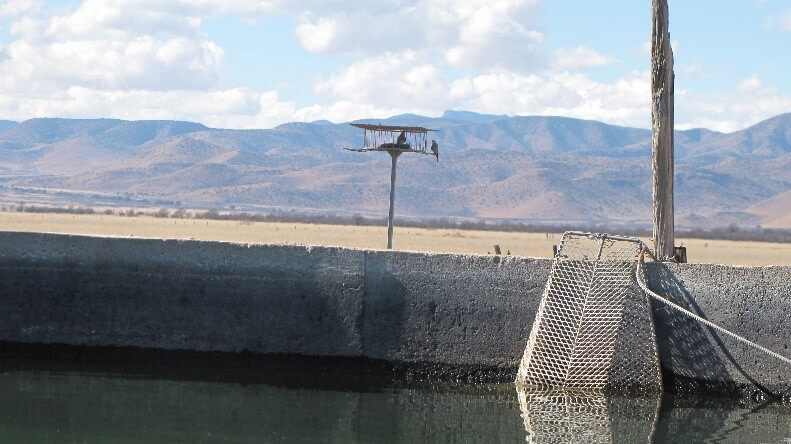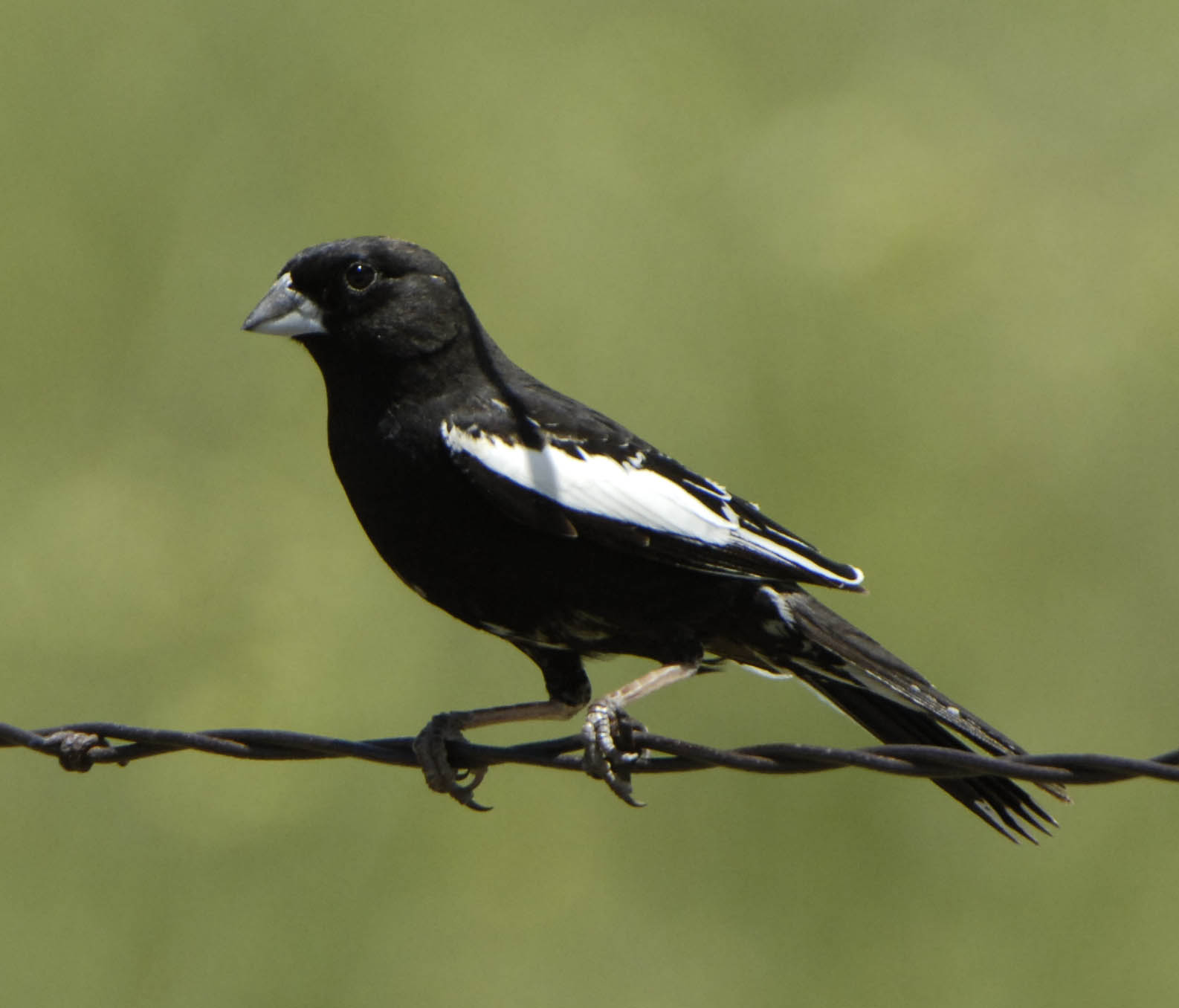I stop what I’m doing for a moment and look up to watch a pair of circling Red-tailed Hawks. They’re smugly indifferent to my work, but their presence makes it go a little faster all the same. With the Western Meadowlarks, Lark Buntings, and Cassin’s Sparrows as a soundtrack, it’s a simply beautiful day to be outside. I revel in it and continue measuring a fence line.
- Western Meadowlark. Photo by Deanna Beutler.
- Lark Bunting. Photo by Bill Schmoker.
This aspect of my job as a Private Lands Wildlife Biologist is one of the more difficult ones to explain to fellow bird lovers. Today, I’m walking a fence line and determining if it meets the Natural Resources Conservation Service (NRCS) standards for payment under the Farm Bill. I often plan fences in contracts with agricultural producers for an array of wildlife habitat improvements: to protect wetlands or riparian habitats, to better manage grazing for grassland health, to control livestock access while removing noxious weeds or reseeding grass, etc. All actions designed to benefit grassland birds.
At the same time, the fences themselves are not necessarily beneficial to wildlife, including birds. Fences can inhibit free wildlife movement or cause collisions, while also providing unnatural perches for predatory raptors. However, NRCS takes wildlife into consideration for every project, not just those dedicated to wildlife. NRCS standards incorporate wildlife behavior and needs to ensure that a well-constructed fence is also a wildlife-friendly fence.

A fence completed under an EQIP contract to reduce grazing pressure on the pond in the background for Plains Leopard Frogs, ducks, and other wildlife
For example, a standard NRCS fence line might be a 3-wire barbed wire fence. Under this scenario, the bottom wire must be above a certain height, to allow pronghorn to pass below without injury. Conversely, the top wire may not exceed a certain height, to allow deer to jump freely over the fence. Fenceposts will not extend past the top wire any more than four inches, a requirement to minimize raptor use of fences, which add vertical structure to landscapes that typically have very little.
In fact, wildlife concerns thread through the standards of every practice that an agricultural producer might apply, from fences to watering tanks to tree removal. Watering tanks must include an installed bird ladder, to allow safe wildlife use. Juniper or tamarisk removal must occur outside of the primary nesting season from March 15 to July 15 to reduce disturbance of breeding birds. These represent just a couple examples across a huge range of diverse practices that all incorporate wildlife into the design.

Falcons in nesting platform behind water tank with escape ladder for them to perch on while drinking. Photo © IMC Vida Silvestre
I find it deeply satisfying to evaluate these practices through that lens. Every action we take to restore and maintain healthy grasslands for birds contains small details that play an important role in how well we balance needs and impacts. It’s a part of the larger picture where every little bit helps and we can all make a difference; especially Bird Conservancy’s Stewardship team working with NRCS and producers to keep grasslands healthy for grassland birds.
Katie Merewether is a Private Lands Wildlife Biologist based in Rocky Ford, CO. CLICK HERE to learn more about our Stewardship Team.




